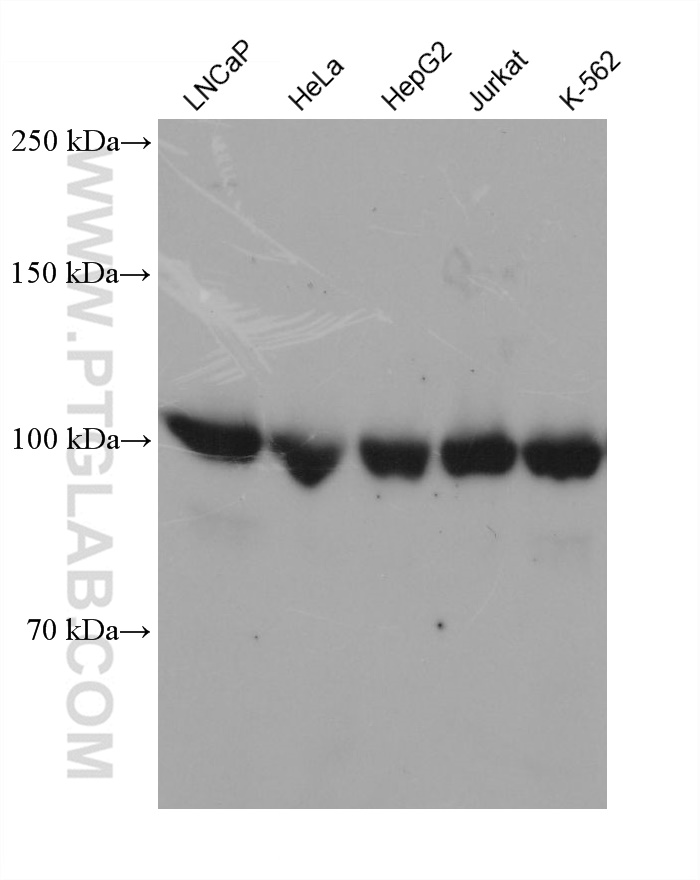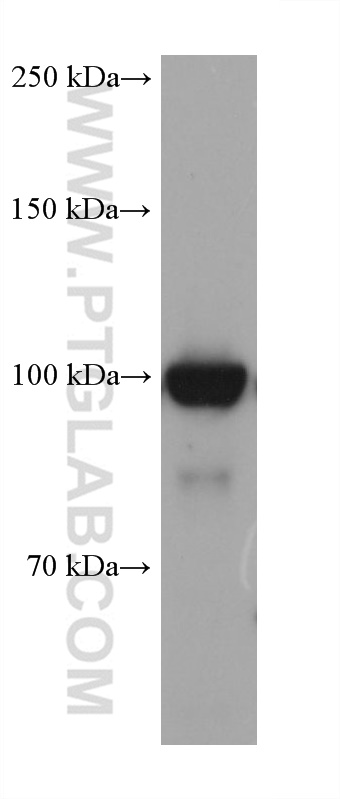验证数据展示
产品信息
68810-1-PBS targets DNA ligase III/LIG3 as part of a matched antibody pair:
MP50683-2: 68810-1-PBS capture and 68810-3-PBS detection (validated in Cytometric bead array)
MP50683-3: 68810-1-PBS capture and 68810-2-PBS detection (validated in Cytometric bead array)
Unconjugated mouse monoclonal antibody pair in PBS only (BSA and azide free) storage buffer at a concentration of 1 mg/mL, ready for conjugation.
This conjugation ready format makes antibodies ideal for use in many applications including: ELISAs, multiplex assays requiring matched pairs, mass cytometry, and multiplex imaging applications.Antibody use should be optimized by the end user for each application and assay.
| 经测试应用 | WB, Cytometric bead array, Indirect ELISA Application Description |
| 经测试反应性 | human, mouse, rat |
| 免疫原 | DNA ligase III/LIG3 fusion protein Ag31484 种属同源性预测 |
| 宿主/亚型 | Mouse / IgG1 |
| 抗体类别 | Monoclonal |
| 产品类型 | Antibody |
| 全称 | ligase III, DNA, ATP-dependent |
| 别名 | LIG3, 1B10B3, DNA ligase 3, DNA ligase III, EC:6.5.1.1 |
| 计算分子量 | 100-110 kDa |
| 观测分子量 | 100 kDa |
| GenBank蛋白编号 | BC068005 |
| 基因名称 | LIG3 |
| Gene ID (NCBI) | 3980 |
| 偶联类型 | Unconjugated |
| 形式 | Liquid |
| 纯化方式 | Protein G purification |
| UNIPROT ID | P49916 |
| 储存缓冲液 | PBS only , pH 7.3 |
| 储存条件 | Store at -80°C. The product is shipped with ice packs. Upon receipt, store it immediately at -80°C |
背景介绍
DNA ligase III (DNA ligase 3) is an enzyme that in humans is encoded by the LIG3 gene. The human LIG3 gene encodes ATP-dependent DNA ligases that seal interruptions in the phosphodiester backbone of duplex DNA. There are three families of ATP-dependent DNA ligases in eukaryotes. These enzymes utilize the same three step reaction mechanism; 1 formation of a covalent enzyme-adenylate intermediate; 2 transfer of the adenylate group to the 5' phosphate terminus of a DNA nick; 3 phosphodiester bond formation. Unlike LIG1 and LIG4 family members that are found in almost all eukaryotes, LIG3 family members are less widely distributed. The LIG3 gene encodes several distinct DNA ligase species by alternative translation initiation and alternative splicing mechanisms.



